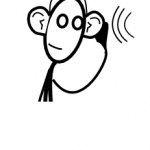 According to Marshall Goldsmith, leadership expert and best-selling author, “80 percent of our success in learning from other people is based upon how well we listen”. We know it’s the “right” thing to do, yet we are continually challenged to do it well. What gets in our way of listening?
According to Marshall Goldsmith, leadership expert and best-selling author, “80 percent of our success in learning from other people is based upon how well we listen”. We know it’s the “right” thing to do, yet we are continually challenged to do it well. What gets in our way of listening?
Too many distractions. It’s hard to stay focused on what someone else is saying when there are sidebar conversations, bad line connections, and electronic gadgets buzzing, multi-tasking rampant. Be sure to establish ground rules for your teams to create the most productive environment as possible. When engaging virtual team members, be sure everyone knows call-in details and what to do if the call unexpectedly is disconnected. Avoid putting your phone on hold during the teleconference especially if you’re calling from a phone that plays music.
Making assumptions. Often, we make the mistake of assuming one situation is the same as another, when it may be very different. We all have the potential to make assumptions about what others are telling us. To avoid making assumptions, listen as objectively as possible. There are two essential skills that will help us identify assumptions and manage them. The first is to reflect back to people what we believe they have told us, using our own words. This allows the other person to immediately correct our misunderstandings. The second thing we can do to check our understanding of information is to ask open questions. Questions beginning with “when”, “who”, “what” and “how” are particularly useful for gathering facts.
Planning our response. If we begin to formulate our response as someone else is speaking, we have stopped listening. A great exercise to emphasize the importance of complete listening goes like this: Pair up participants and ask each pair to stand face-to-face. Identify who will start the conversation. The person begins with a simple sentence. The other participant responds to this sentence, starting with a word that begins with the last letter of the other person’s sentence. Have participants continue the conversation, using the same procedure for about 3 minutes. Active listening is a must!
Give everyone who is speaking your undivided attention. This means not only listen to one another, but also demonstrate your listening through verbal and non-verbal signals. Sometimes quiet listening is the best way to be heard.
Lisa DiTullio, Principal, Your Project Office, www.yourprojectoffice.com
